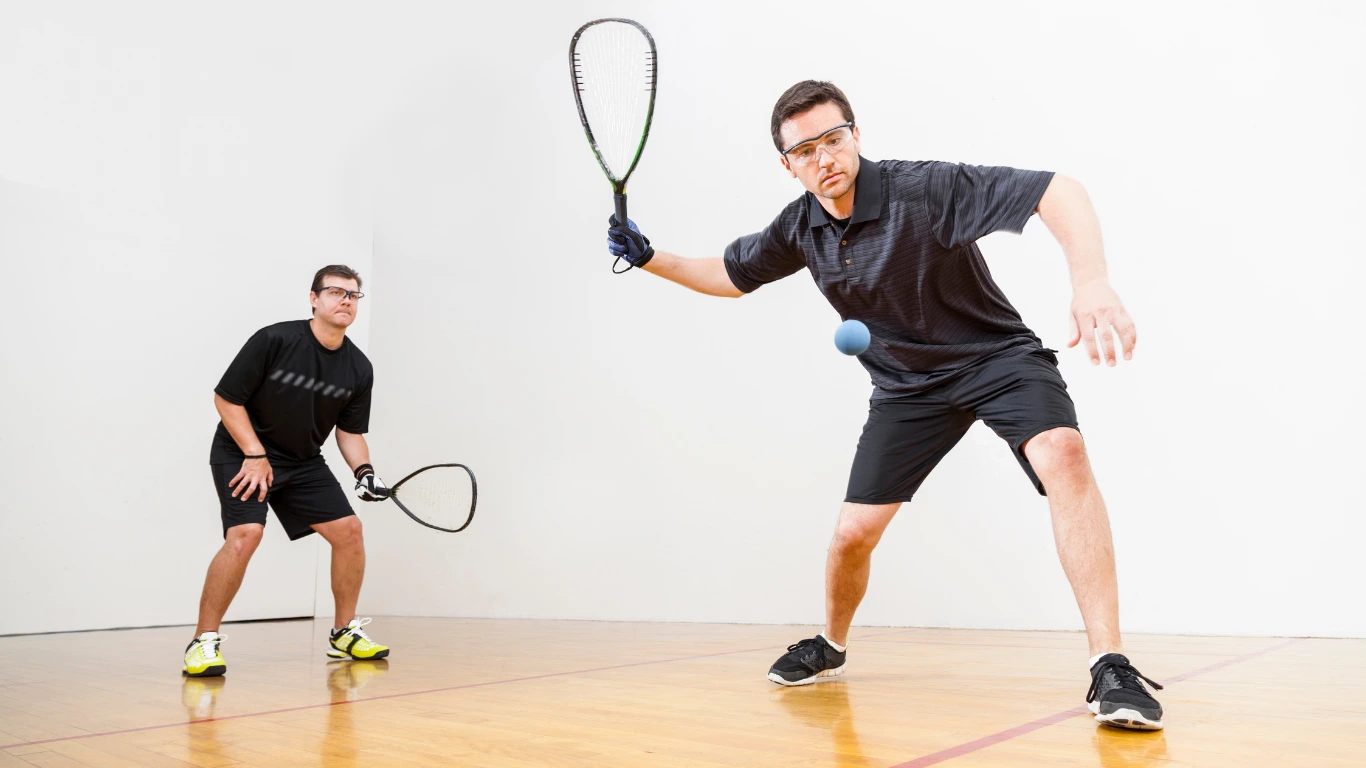Are you searching for an exciting way to stay fit and healthy? Look no further than racquetball! This high-intensity sport offers a plethora of benefits that will not only keep you in great shape but also provide hours of entertainment. In this comprehensive guide,
we will delve into the world of racquetball and explore the numerous advantages it offers for your physical and mental well-being.
Burn Calories and Shed Pounds
Let’s start with one of the most enticing aspects of playing racquetball: calorie burning. This sport is a calorie-burning powerhouse. In just one hour of singles racquetball, a 160-pound individual can torch around 600 calories. If you opt for doubles racquetball, with its longer volleys and increased court coverage, you can burn over 700 calories per hour. These calorie-burning rates are comparable to those achieved through vigorous running or swimming.
As you dash around the court, repeatedly hitting the ball, your metabolism skyrockets. The beauty of racquetball is that this heightened metabolism persists even after you’ve finished playing, making it an exceptional exercise for both weight loss and weight maintenance.
Build Muscle and Enhance Coordination
Beyond calorie burning, racquetball offers significant benefits in terms of muscle building and coordination improvement. The explosive movements and lightning-fast reflexes required in this sport engage muscles throughout your body. Slamming the ball at high speeds works the upper and lower body muscles, while the constant starting, stopping, lunging, and pivoting put your legs, glutes, and core through rigorous workouts. This not only enhances your strength but also improves balance and coordination.
The short bursts of intense muscle engagement during racquetball play increase power output, resulting in a strong yet lean physique. Additionally, the hand-eye coordination developed through racquetball can significantly boost agility and reflexes, translating into improved performance in various other sports and activities.
Joint Health and Injury Prevention
Racquetball is a sport that promotes joint health and reduces the risk of common overuse injuries. The variety of movements and intensities involved in racquetball contribute to increased flexibility, mobility, and stability in major muscle groups and joints like the shoulders, elbows, hips, and knees.
Engaging in aerobic activities, such as racquetball, enhances circulation, ensuring that vital nutrients are delivered to support cartilage and synovial fluid production. These substances are crucial for cushioning and lubricating your joints. Furthermore, the weight-bearing nature of racquetball and the maintenance of adequate muscle strength act as protective factors for your joints, shielding them from potential damage. Playing racquetball regularly, even just a couple of times a week, can keep your musculoskeletal system healthy and resilient.
Stress Relief and a Mental Boost
Like any effective workout, racquetball provides natural stress relief. Physical activity releases endorphins, the body’s feel-good chemicals, leaving you feeling energized and uplifted. The mental focus required in racquetball also serves as a positive distraction from daily worries. Learning new racquetball strategies and skills fosters a sense of achievement that can enhance your overall mood.
Regular racquetball activity has the added benefit of improving sleep quality, a vital component of cognitive function and emotional well-being. Moreover, the social aspect of playing racquetball with others promotes positive mood and relationships, contributing to your mental health and overall happiness.
Fun and Engaging Exercise
Last but not least, racquetball is simply a fun and engaging form of exercise for most people. The excitement of the game gets your adrenaline pumping, and the enclosed court allows you to play in any weather conditions. The competitive aspect of racquetball motivates you to run harder and strategize your shots.
There’s also a strong social component to racquetball, as playing partners often become friends. Joining a racquetball league can add camaraderie and support to your fitness journey. When you’re having fun, you perceive the exertion as lower, which means you’re more likely to exercise longer. The engaging nature of racquetball makes it a sustainable lifelong activity for maintaining good health.
Getting Started with Racquetball
If you’re inspired to reap the fitness benefits of racquetball, here are some essential tips to get you started:
Find a Local Venue: Look for a nearby gym or recreation center equipped with racquetball courts and the necessary equipment. Make sure to wear athletic shoes with good traction for safety.
Take an Instructional Class: If you’re new to racquetball, consider enrolling in a beginner instructional class or seek guidance from an experienced player who can teach you proper swing techniques, rules, and scoring.
Start Slowly: Begin by focusing on ball control and enjoy friendly rallies as you learn the ropes of the game.
Patience is Key: Be patient with yourself as you develop your racquetball skills. Start with the basics before introducing more advanced strategies to your gameplay.
Avoid Overexertion: To prevent injuries, avoid pushing yourself too hard too quickly. Schedule rest days between racquetball sessions to allow your body to recover.
Find Suitable Opponents: Playing with individuals of a similar skill level can make your games more enjoyable and help you progress together.
In Conclusion
Racquetball is more than just a sport; it’s a rewarding lifelong activity that offers a plethora of fitness and wellness benefits. From its cardiovascular workout and muscle-building properties to calorie burning and stress relief, racquetball has something for everyone. If you’re looking for an enjoyable path to fitness that also brings the social aspect into play, racquetball may be the perfect choice for you. So, go ahead, grab your racquet, and dive into this exhilarating sport—it’s a fun path to fitness that you won’t want to miss.
